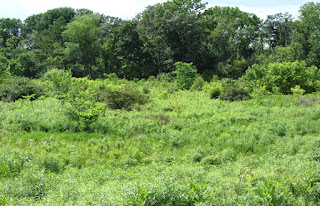Woodland owners from Pennsylvania honored
for efforts to support forest habitat for wildlife
WASHINGTON, D.C. (October 20, 2015) – The American Tree Farm System (ATFS), awarded the National Outstanding
Tree Farmer of the Year award, sponsored in part by Plum Creek, to Raul Chiesa
and Janet Sredy of Elizabeth, Pennsylvania (PA). Chiesa and Sredy, managers of
Becket Run Woodlands, have demonstrated exceptional forest stewardship in
improving wildlife habitat on their 110-acre property and more broadly in the
community (Click here to watch video of Raul and Janet at Tree Farm).
Raul and
Janet were presented this high achievement by Pennsylvania Senator Robert
Casey, Under Secretary for Natural Resources and Environment at the U.S.
Department of Agriculture, Robert Bonnie and Tom Martin, President and CEO of
the American Forest Foundation (AFF), the organization that runs ATFS.
“I want to
extend my congratulations to Janet Sredy and Raul Chiesa for being chosen as
the National Outstanding Tree Farmers of the Year. Janet and Raul’s work in
transforming Beckets Run Woodlands shows that we all must take part in
conserving and protecting our forests,” Senator Casey said. “Forestry is close
to the heart of many people across our region, serving as a major part of our
heritage and our economy. As a member of the Senate Committee on Agriculture,
Nutrition and Forestry, I have and will continue to support any efforts in
protecting National Forests, especially in Pennsylvania. But the work Janet and
Raul do, has a lasting effect on how we ensure the continued stewardship of
Pennsylvania’s woodlands. Thank you both for your continued work.”
“Family
forest owners like Raul and Janet are some of the unsung heroes of our
forests,” said Under Secretary Robert Bonnie. ”Many don’t realize that family
forest owners are the largest ownership group of forests in the U.S. What’s
more, the work they do on their land, is felt far beyond their properties – for
wildlife habitat, clean water, recreation and more.”
Chiesa and
Sredy, who took ownership of Beckets Run Woodlands, within the State designated
Beckets Run Biodiversity Area, in 2007, found themselves managers of a severely
damaged property due to poor agriculture practices, air pollution, vandalism
and fractured ownership. Wildlife in the area struggled to move through the
underbrush and lacked the needed food because of invasive species and disease.
Chiesa and Sredy immediately created a management plan and set on a path to
restore the native ecosystem, improving the health of their trees, eradicating
invasives and planting species that provided food for wildlife. Not long after,
they were certified in the American Tree Farm System and enrolled in the U.S.
Forest Service Forest Stewardship Program with the support of Pennsylvania’s
Department of Conservation and Natural Resources, Bureau of Forestry.
In a state
known for deer hunting, Chiesa and Sredy saw an opportunity to provide for the
wildlife, while also providing for the community. They established a wildlife
management partnership with neighboring landowners and the Pennsylvania Game
Commission to improve wildlife and game, and provide recreational hunting to
more than 100 hunters. Chiesa and Sredy have also formed an educational
partnership with neighbors, the local university and Pennsylvania’s Department
of Conservation and Natural Resources to protect and study rare Pennsylvania
plant species.
“Our Tree
Farmers are significantly contributing beyond their own property boundaries,
and they are doing it in fresh, creative ways,” said Tom Martin of AFF.
“Recognizing and honoring individuals like Janet and Raul is the least we can
do to thank them.”


